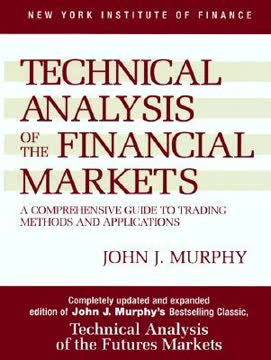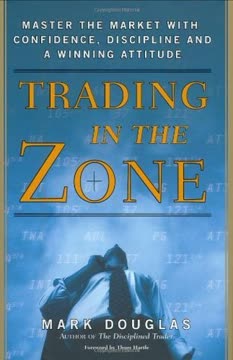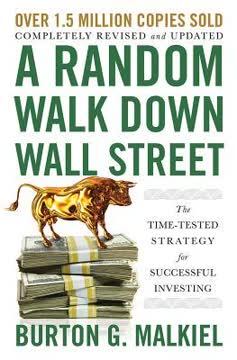ข้อสำคัญ
1. ควบคุมจิตใจของคุณ: อารมณ์คือศัตรูของการเทรดที่ประสบความสำเร็จ
"ไม่มีใครสามารถมีความสุขและทำเงินได้ในเวลาเดียวกัน"
ควบคุมอารมณ์ของคุณ ตลาดเป็นสภาพแวดล้อมที่ไม่ให้อภัย ซึ่งการตัดสินใจที่เกิดจากอารมณ์สามารถนำไปสู่ความล้มเหลวทางการเงินได้ นักเทรดที่ประสบความสำเร็จจะเข้าหาตลาดด้วยจิตใจที่สงบและมีเหตุผล โดยมุ่งเน้นไปที่แผนการเทรดของตนมากกว่าความรู้สึกที่เกิดจากการชนะหรือแพ้
รู้จักกับกับดักทางจิตวิทยา ข้อผิดพลาดที่พบบ่อย ได้แก่:
- "ตำนานสมอง": เชื่อว่านักเทรดที่ประสบความสำเร็จมีความรู้ลับ
- "ตำนานการขับเคลื่อนอัตโนมัติ": พึ่งพาระบบอัตโนมัติเพียงอย่างเดียว
- "ตำนานการขาดทุน": โทษการขาดทุนจากเงินทุนที่ไม่เพียงพอ
พัฒนาวินัยทางจิตใจ ปฏิบัติต่อการเทรดเหมือนธุรกิจที่จริงจัง ไม่ใช่เกมหรือความบันเทิง ใช้กลยุทธ์ในการจัดการความเครียด เช่น:
- บันทึกการเทรดเพื่อติดตามการตัดสินใจและอารมณ์
- ตั้งกฎที่ชัดเจนสำหรับการเข้าซื้อ ขาย และการจัดการความเสี่ยง
- ทบทวนและเรียนรู้จากทั้งการชนะและการแพ้อย่างสม่ำเสมอ
2. เข้าใจจิตวิทยาตลาด: แนวโน้มสะท้อนพฤติกรรมของมวลชน
"ตลาดไม่ได้ถูกขับเคลื่อนด้วยข้อเท็จจริง แต่โดยวิธีที่ผู้คนมองและตอบสนองต่อข้อเท็จจริง"
ตลาดสะท้อนพฤติกรรมของมนุษย์ ราคาสะท้อนการตัดสินใจร่วมของผู้เข้าร่วมตลาดทั้งหมด ซึ่งถูกขับเคลื่อนโดยอารมณ์ ความเชื่อ และการตอบสนองต่อข้อมูล การเข้าใจจิตวิทยาของมวลชนนี้เป็นสิ่งสำคัญสำหรับการเทรดที่ประสบความสำเร็จ
ระบุช่วงแนวโน้ม แนวโน้มของตลาดมักจะมีรูปแบบดังนี้:
- การสะสม: นักลงทุนที่มีความรู้เริ่มซื้อ
- การเข้าร่วมของสาธารณะ: แนวโน้มเริ่มชัดเจน ดึงดูดผู้ซื้อมากขึ้น
- การกระจาย: เงินที่ชาญฉลาดเริ่มขายให้กับผู้เข้ามาช้า
- ความตื่นตระหนก: แนวโน้มกลับทิศทางอย่างรวดเร็ว
ใช้ตัวชี้วัดเพื่อวัดความรู้สึกของตลาด เครื่องมือเช่น New High-New Low Index, MACD-Histogram และ Stochastic สามารถช่วยคุณ:
- ยืนยันความแข็งแกร่งของแนวโน้ม
- ระบุการกลับตัวที่อาจเกิดขึ้น
- วัดสภาวะที่ซื้อมากเกินไปและขายมากเกินไป
3. พัฒนาระบบการเทรดที่แข็งแกร่ง: รวมการวิเคราะห์ทางเทคนิคกับการจัดการความเสี่ยง
"ระบบการเทรดต้องรวมตัวชี้วัดที่ติดตามแนวโน้มกับออสซิลเลเตอร์"
สร้างระบบที่ครอบคลุม วิธีการเทรดที่ประสบความสำเร็จจะรวมหลายองค์ประกอบ:
- การวิเคราะห์ทางเทคนิคเพื่อตรวจสอบแนวโน้มและจุดเข้าซื้อ/ขาย
- การวิเคราะห์พื้นฐานเพื่อให้บริบทตลาดในระยะยาว
- กฎการจัดการความเสี่ยงเพื่อปกป้องเงินทุน
- การเตรียมจิตใจและวินัย
ใช้ตัวชี้วัดหลายตัว รวมตัวชี้วัดที่ติดตามแนวโน้ม (เช่น ค่าเฉลี่ยเคลื่อนที่, MACD) กับออสซิลเลเตอร์ (เช่น Stochastic, RSI) เพื่อ:
- ยืนยันแนวโน้ม
- ระบุการกลับตัวที่อาจเกิดขึ้น
- กรองสัญญาณที่ผิดพลาด
ใช้การจัดการความเสี่ยงอย่างเข้มงวด หลักการสำคัญ ได้แก่:
- อย่ารับความเสี่ยงเกินกว่า 2% ของบัญชีในแต่ละการเทรด
- ใช้คำสั่งหยุดขาดทุนเพื่อลดการขาดทุนที่อาจเกิดขึ้น
- รับผลกำไรบางส่วนเพื่อล็อกกำไรและลดความเสี่ยง
4. ใช้กรอบเวลาหลายช่วง: ใช้ระบบการเทรดแบบ Triple Screen
"ระบบการเทรดแบบ Triple Screen รวมตัวชี้วัดที่ติดตามแนวโน้มกับออสซิลเลเตอร์และวิเคราะห์ตลาดในกรอบเวลาหลายช่วง"
วิเคราะห์ตลาดในบริบท ระบบ Triple Screen ใช้ "หน้าจอ" สามตัวในการกรองการเทรด:
- แนวโน้มระยะยาว (เช่น แผนภูมิรายสัปดาห์): กำหนดทิศทางตลาดโดยรวม
- แนวโน้มระยะกลาง (เช่น แผนภูมิรายวัน): ระบุการเคลื่อนไหวตรงข้ามแนวโน้มเพื่อเข้าซื้อ
- การตั้งเวลาในระยะสั้น (เช่น แผนภูมิระหว่างวัน): ปรับจุดเข้าซื้อให้เหมาะสม
ติดตามแนวโน้มหลัก ให้ทำการเทรดในทิศทางของแนวโน้มระยะยาวเท่านั้น:
- ในแนวโน้มขาขึ้น มองหาช่องทางการซื้อในช่วงการปรับตัวระยะสั้น
- ในแนวโน้มขาลง มองหาช่องทางการขายในช่วงการฟื้นตัวระยะสั้น
ใช้ตัวชี้วัดหลายตัว รวมตัวชี้วัดประเภทต่าง ๆ ข้ามกรอบเวลา:
- ตัวชี้วัดที่ติดตามแนวโน้ม (เช่น MACD-Histogram) บนแผนภูมิรายสัปดาห์
- ออสซิลเลเตอร์ (เช่น Force Index, Elder-ray) บนแผนภูมิรายวัน
- การเคลื่อนไหวของราคา หรือตัวชี้วัดโมเมนตัมสำหรับการตั้งเวลาในระยะสั้น
5. ใช้ตัวชี้วัดทางเทคนิคที่สำคัญ: MACD, Stochastic, และ Elder-ray
"Elder-ray ช่วยให้คุณเห็นพลังของวัวและหมีที่อยู่เบื้องหลังตลาด"
เชี่ยวชาญในตัวชี้วัดที่สำคัญ มุ่งเน้นไปที่การเข้าใจและใช้เครื่องมือทางเทคนิคที่มีพลังอย่างมีประสิทธิภาพ:
MACD (Moving Average Convergence-Divergence):
- ระบุแนวโน้มและการกลับตัวที่อาจเกิดขึ้น
- ให้สัญญาณซื้อ/ขายผ่านการตัดกันของเส้นและการเบี่ยงเบน
Stochastic:
- วัดโมเมนตัมและระบุสภาวะซื้อมากเกินไป/ขายมากเกินไป
- มีประสิทธิภาพสำหรับการเทรดในตลาดที่มีขอบเขต
Elder-ray:
- เปรียบเทียบราคาปัจจุบันกับค่าเฉลี่ยเคลื่อนที่
- เปิดเผยความแข็งแกร่งสัมพัทธ์ของวัวและหมี
มองหาการรวมกัน สัญญาณการเทรดที่แข็งแกร่งที่สุดเกิดขึ้นเมื่อหลายตัวชี้วัดตรงกัน ยืนยันการเคลื่อนไหวที่อาจเกิดขึ้น
ใส่ใจต่อการเบี่ยงเบน เมื่อราคาทำจุดสูงสุด/ต่ำสุดใหม่ แต่ตัวชี้วัดไม่ยืนยัน มักจะเป็นสัญญาณของการกลับตัวที่อาจเกิดขึ้น
6. ใช้การจัดการเงินที่มีประสิทธิภาพ: การอยู่รอดคือสิ่งสำคัญที่สุด
"เป้าหมายแรกของการจัดการเงินคือการรับประกันการอยู่รอด"
ให้ความสำคัญกับการรักษาเงินทุน หากไม่มีเงินทุน คุณไม่สามารถเทรดได้ หลักการสำคัญ ได้แก่:
- อย่ารับความเสี่ยงเกินกว่าที่คุณจะสามารถสูญเสียได้
- หลีกเลี่ยงการใช้เลเวอเรจมากเกินไปในบัญชีของคุณ
- ใช้การกำหนดขนาดตำแหน่งเพื่อจัดการความเสี่ยงในหลายการเทรด
ตั้งเป้าหมายที่เป็นจริง มุ่งหวังผลตอบแทนที่มั่นคงและสม่ำเสมอ แทนที่จะพยายามรวยเร็ว:
- ผลตอบแทน 25-30% ต่อปีถือเป็นผลการดำเนินงานที่ยอดเยี่ยม
- มุ่งเน้นการสร้างประวัติการเทรดที่แข็งแกร่งในระยะยาว
ใช้กฎ 2% อย่ารับความเสี่ยงเกินกว่า 2% ของทุนในบัญชีในแต่ละการเทรด:
- จะช่วยจำกัดผลกระทบจากการขาดทุนต่อเนื่อง
- ช่วยให้คุณสามารถทนต่อการขาดทุนหลายครั้งติดต่อกันได้โดยไม่ทำให้บัญชีของคุณเสียหาย
จัดการการเทรดที่ชนะ ปกป้องผลกำไรและลดความเสี่ยง:
- ใช้การหยุดขาดทุนแบบเลื่อนเพื่อรักษาผลกำไร
- รับผลกำไรบางส่วนที่ระดับที่กำหนดไว้ล่วงหน้า
- ปล่อยให้การชนะดำเนินต่อไปในขณะที่จัดการความเสี่ยง
7. เรียนรู้และปรับตัวอย่างต่อเนื่อง: ตลาดเปลี่ยนแปลง ดังนั้นคุณก็ควรเปลี่ยนแปลง
"ตลาดมีการเปลี่ยนแปลงตลอดเวลา และวิธีการที่ใช้ได้ผลเมื่อวานนี้อาจจะไม่ได้ผลในวันนี้ และมีโอกาสน้อยมากที่จะใช้ได้ผลในปีหน้า"
รักษาความยืดหยุ่น สิ่งเดียวที่คงที่ในตลาดคือการเปลี่ยนแปลง นักเทรดที่ประสบความสำเร็จ:
- ทบทวนและปรับปรุงระบบการเทรดของตนอย่างสม่ำเสมอ
- ปรับตัวให้เข้ากับสภาพตลาดและความผันผวนที่เปลี่ยนแปลง
- เปิดรับแนวคิดและเทคนิคใหม่ ๆ
ยอมรับการเรียนรู้อย่างต่อเนื่อง พัฒนาทักษะและความรู้ของคุณผ่าน:
- การศึกษาประวัติศาสตร์ตลาดและแนวโน้มในอดีต
- การวิเคราะห์การเทรดของคุณเอง (ทั้งการชนะและการแพ้)
- การติดตามข่าวสารเกี่ยวกับเหตุการณ์ทางเศรษฐกิจและภูมิรัฐศาสตร์
ทดสอบและปรับปรุงวิธีการของคุณ ใช้การทดสอบย้อนหลังและการเทรดจำลองเพื่อ:
- ยืนยันแนวคิดการเทรดใหม่ก่อนที่จะเสี่ยงเงินจริง
- ปรับแต่งพารามิเตอร์ของระบบของคุณ
- สร้างความมั่นใจในแผนการเทรดของคุณ
ปลูกฝังแนวคิดการเติบโต มองความท้าทายและอุปสรรคเป็นโอกาสในการเรียนรู้และพัฒนา:
- วิเคราะห์การเทรดที่ขาดทุนเพื่อหาบทเรียนที่มีค่า
- ขอความคิดเห็นจากนักเทรดคนอื่นหรือที่ปรึกษา
- รักษาความถ่อมตนและยอมรับว่ามีสิ่งที่ต้องเรียนรู้อีกมากมาย
อัปเดตล่าสุด:
FAQ
What's Trading for a Living by Alexander Elder about?
- Focus on Psychology: The book emphasizes the critical role of psychology in trading, highlighting how emotions like fear and greed can impact decision-making.
- Trading Tactics and Money Management: It offers practical trading tactics and money management strategies, essential for long-term success in the markets.
- Three Pillars of Trading: The book is structured around three main pillars: psychology, market analysis, and money management, each contributing to a trader's success.
Why should I read Trading for a Living by Alexander Elder?
- Expert Insights: Written by Dr. Alexander Elder, a psychiatrist and professional trader, the book combines psychological principles with trading strategies.
- Comprehensive Guide: It serves as a complete guide for both novice and experienced traders, offering insights into trading psychology, technical analysis, and risk management.
- Real-World Applications: Dr. Elder shares personal experiences and lessons learned, making the content relatable and applicable to real-world trading scenarios.
What are the key takeaways of Trading for a Living by Alexander Elder?
- Self-Discipline is Crucial: The book stresses the importance of self-discipline in managing emotions and adhering to trading plans.
- Understanding Market Psychology: Recognizing crowd behavior and mass psychology can help traders make informed decisions.
- Risk Management is Essential: Effective risk management is vital for long-term survival, as even the best strategies can fail without it.
How does Trading for a Living define trading psychology?
- Key to Success: Psychology is highlighted as the key to successful trading, with an emphasis on understanding one's own emotions and biases.
- Emotional Roller Coaster: Trading is described as an emotional roller coaster, where managing emotions is essential for maintaining discipline.
- Self-Analysis: Keeping a trading diary is encouraged to analyze decisions and emotional responses, helping identify patterns of behavior.
What is the Triple Screen Trading System in Trading for a Living?
- Three-Step Approach: It involves analyzing the market on three different timeframes to confirm trading signals, filtering out noise for reliable signals.
- Combining Indicators: The system uses a combination of trend-following indicators and oscillators to identify entry and exit points.
- Risk Management Focus: Emphasizes strict money management rules, ensuring traders do not risk more than a predetermined percentage of their capital.
What are the different types of gaps mentioned in Trading for a Living?
- Common Gaps: Occur in quiet markets and are quickly closed, often not significant for trading decisions.
- Breakaway Gaps: Signal the beginning of a new trend with increased volume, indicating a strong shift in market sentiment.
- Exhaustion Gaps: Occur at the end of a trend, signaling a potential reversal and providing excellent shorting opportunities.
How does Trading for a Living explain the concept of trendlines?
- Identifying Trends: Trendlines connect significant highs or lows on a chart, helping traders visualize market direction.
- Support and Resistance: They can act as support in uptrends and resistance in downtrends, providing critical levels for trading decisions.
- Angle of the Trendline: The slope indicates trend strength, with steeper lines suggesting stronger trends.
What are the best quotes from Trading for a Living by Alexander Elder and what do they mean?
- "The key to winning was inside my head and not inside a computer.": Emphasizes the importance of psychology over technical tools in trading.
- "You can have a brilliant trading system, but if your money management is bad, then a short string of losses will destroy your account.": Highlights the necessity of effective risk management.
- "Do not confuse brains with a bull market.": Cautions against overconfidence during market upswings, reminding traders to remain disciplined.
How can I apply the concepts from Trading for a Living to my trading strategy?
- Develop a Trading Plan: Create a detailed plan including entry and exit strategies, risk management rules, and psychological self-assessments.
- Monitor Market Psychology: Pay attention to crowd behavior and sentiment indicators to gauge market mood.
- Practice Risk Management: Implement strict money management rules to protect your account from significant losses.
How does the Triple Screen trading system work in Trading for a Living?
- Three Screens for Analysis: Analyzes trades through three timeframes: long-term trend, intermediate trend, and short-term price action.
- First Screen - Market Tide: Uses a trend-following indicator on a weekly chart to identify the primary trend.
- Second Screen - Market Wave: Applies oscillators to daily charts to find entry points against the tide.
What is the significance of emotional control in trading as discussed in Trading for a Living?
- Impact of Emotions: Emotions like fear and greed can cloud judgment, leading to poor trading decisions.
- Psychological Strategies: Offers strategies for developing emotional resilience, such as setting clear trading rules.
- Long-Term Success: Emotional control is key to achieving long-term success, helping traders follow strategies and avoid costly mistakes.
How can I improve my trading discipline as suggested in Trading for a Living?
- Set Clear Rules: Establish and adhere to clear trading rules, including entry and exit points, risk limits, and profit targets.
- Emotional Awareness: Recognize emotional triggers and their effects on trading decisions, practicing mindfulness and self-reflection.
- Regular Review: Conduct regular reviews of trading performance to identify areas for improvement and reinforce disciplined behavior.
รีวิว
การเทรดเพื่อการดำรงชีวิต ได้รับการรีวิวในเชิงบวกเป็นส่วนใหญ่ โดยมีคะแนนเฉลี่ยอยู่ที่ 4.05/5 ผู้อ่านชื่นชมการครอบคลุมที่ละเอียดเกี่ยวกับจิตวิทยาการเทรด กลยุทธ์ และการบริหารจัดการเงิน หลายคนพบว่ามีคุณค่าสำหรับทั้งผู้เริ่มต้นและนักเทรดที่มีประสบการณ์ จุดแข็งของหนังสือเล่มนี้รวมถึงการให้ข้อมูลเชิงลึกเกี่ยวกับจิตวิทยาตลาด การบริหารความเสี่ยง และการวิเคราะห์ทางเทคนิค อย่างไรก็ตาม บางคนวิจารณ์เกี่ยวกับตัวอย่างที่ล้าสมัยและสไตล์การเขียนที่ซ้ำซาก โดยรวมแล้ว ผู้อ่านชื่นชอบแนวทางที่ตรงไปตรงมาของเอลเดอร์และคำแนะนำที่เป็นประโยชน์ โดยถือว่าเป็นหนังสือที่ต้องอ่านสำหรับผู้ที่ต้องการเป็นนักเทรดที่ประสบความสำเร็จ
Similar Books

















